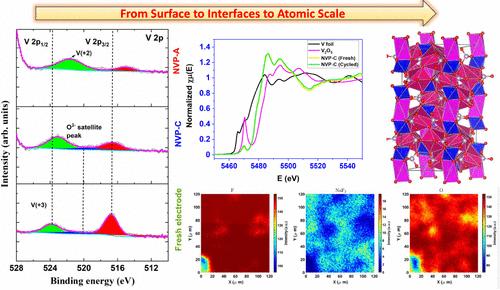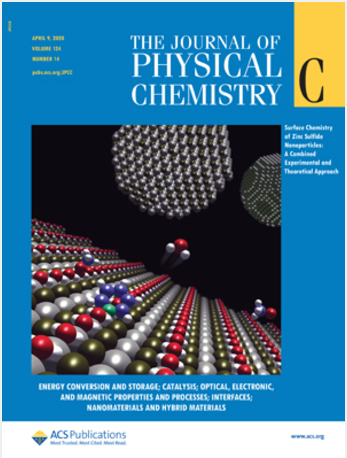Na3V2(PO4)3/C in Symmetric Cells: Evaluating Anode and Cathode Performance
IF 3.2
3区 化学
Q2 CHEMISTRY, PHYSICAL
引用次数: 0
Abstract
Renewable energy sources necessitate efficient energy storage, highlighting the critical challenge and importance of electrochemical storage devices, such as sodium-ion batteries. Na3V2(PO4)3 (NVP), as a typical NASICON structure, is a promising electrode material exhibiting fast Na+ ion conductivity due to its 3D framework. In this report, we present the synthesis of NVP/C (Na3V2(PO4)3/Carbon composite) via the sol–gel method and investigate its electrochemical behavior in both the anodic and cathodic ranges, as well as its assessment in a symmetric cell followed by a detailed postcycling analysis. Increased overpotential has impacted the capacity retention of NVP-C (NVP as a cathode), delivering only 74.61% with an initial specific capacity of 120.20 mAh/g, whereas NVP-A (NVP as an anode) showed better cyclic stability, exhibiting 142.11 mAh/g at the 12th cycle with a capacity retention of 93.03%. NVP-C showed specific capacities of 99.17, 84.74, and 53.20 mAh/g at 25, 0, and −5 °C, respectively, while NVP-A exhibited 191.42, 153.33, and 91.37 mAh/g under the same conditions, at 0.2C over 60 cycles. NVP was studied in a symmetric full cell, exhibiting an average energy density of 92.94 Wh/kg over 50 cycles. Postcycling investigations, including ToF-SIMS, XPS, and XANES, revealed that products of parasitic reactions, such as Na2CO3, NaF2, and NaxPFyOz along with structural distortion on the anode side, significantly impact the lifecycle of NVP. Our findings provide new insights into the performance, which will results in the improvement of NVP symmetric full-cell configurations.

对称电池中的 Na3V2(PO4)3/C:评估阳极和阴极性能
可再生能源需要高效的能量存储,这凸显了钠离子电池等电化学存储设备的严峻挑战和重要性。作为一种典型的 NASICON 结构,Na3V2(PO4)3 (NVP) 是一种很有前途的电极材料,由于其三维框架,Na+ 离子可快速导电。在本报告中,我们通过溶胶-凝胶法合成了 NVP/C(Na3V2(PO4)3/碳复合材料),并研究了其在阳极和阴极范围内的电化学行为,以及在对称电池中的评估,随后进行了详细的循环后分析。过电位的增加影响了 NVP-C(作为阴极的 NVP)的容量保持率,初始比容量为 120.20 mAh/g,容量保持率仅为 74.61%;而 NVP-A(作为阳极的 NVP)则表现出更好的循环稳定性,在第 12 个循环时显示出 142.11 mAh/g,容量保持率为 93.03%。在相同条件下,NVP-C 在 25、0 和 -5 °C 下的比容量分别为 99.17、84.74 和 53.20 mAh/g,而 NVP-A 在 0.2C 下循环 60 次后的比容量分别为 191.42、153.33 和 91.37 mAh/g。在对称全电池中对 NVP 进行了研究,在 50 次循环中显示出 92.94 Wh/kg 的平均能量密度。包括 ToF-SIMS、XPS 和 XANES 在内的循环后研究表明,Na2CO3、NaF2 和 NaxPFyOz 等寄生反应产物以及阳极侧的结构畸变对 NVP 的生命周期产生了重大影响。我们的研究结果为了解其性能提供了新的视角,这将有助于改进 NVP 对称全电池配置。
本文章由计算机程序翻译,如有差异,请以英文原文为准。
求助全文
约1分钟内获得全文
求助全文
来源期刊

The Journal of Physical Chemistry C
化学-材料科学:综合
CiteScore
6.50
自引率
8.10%
发文量
2047
审稿时长
1.8 months
期刊介绍:
The Journal of Physical Chemistry A/B/C is devoted to reporting new and original experimental and theoretical basic research of interest to physical chemists, biophysical chemists, and chemical physicists.
 求助内容:
求助内容: 应助结果提醒方式:
应助结果提醒方式:


